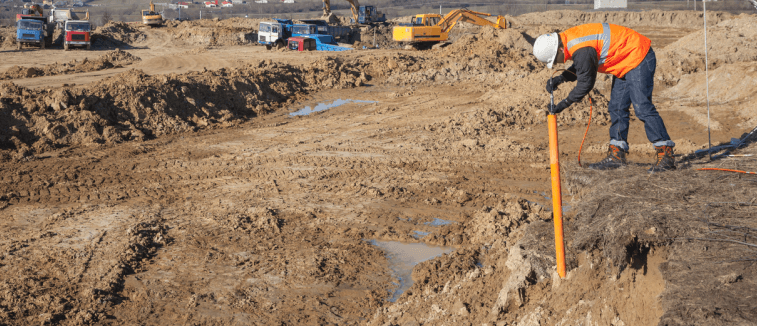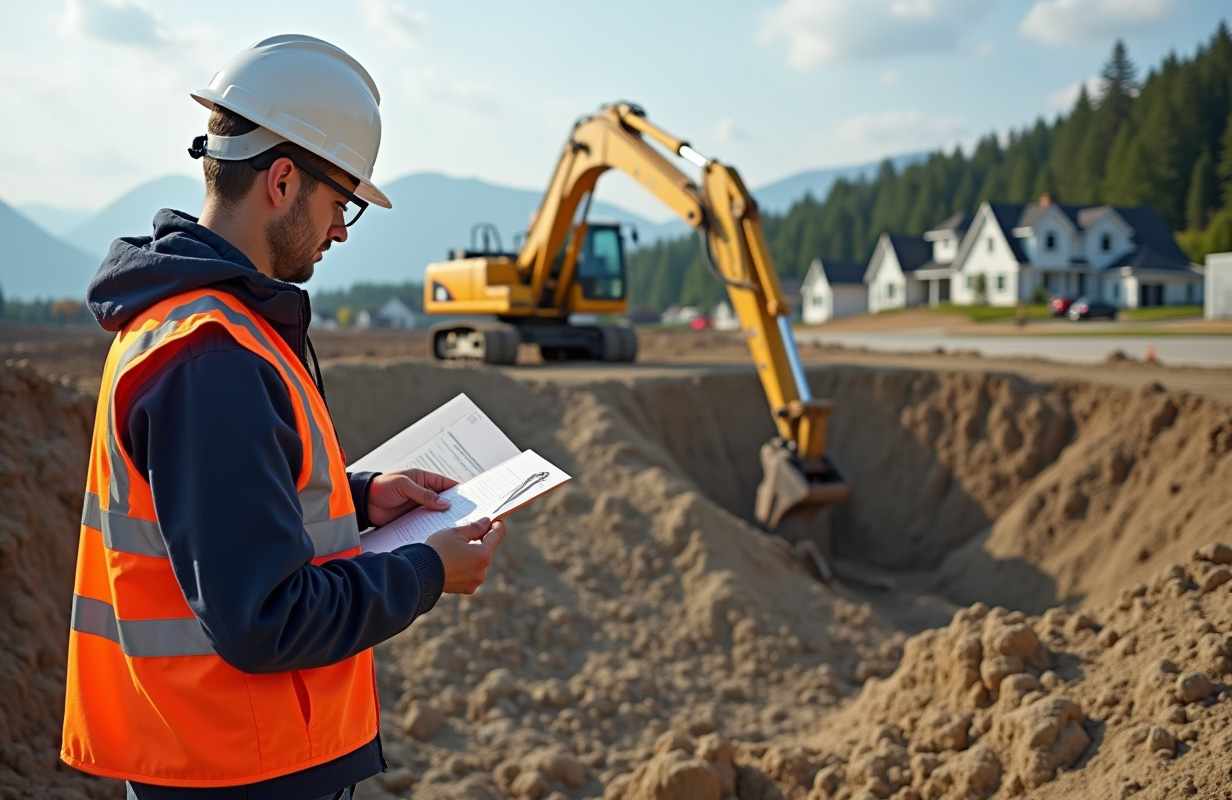Discovering the Role of a Geotechnical Engineer Description and Duties
Discovering the Role of a Geotechnical Engineer Description and Duties
Blog Article
The Significance of Geotechnical Engineering in Addressing Environmental Challenges and Enhancing Construction Safety
Geotechnical design functions as a keystone in the junction of ecological stewardship and building safety, providing crucial understandings into the actions of dirt and rock under different problems. This discipline not only addresses pressing ecological difficulties such as soil disintegration and groundwater security but additionally boosts the toughness of framework versus all-natural dangers. By implementing tactical website examinations and tailored mitigation procedures, geotechnical designers play a crucial role in guarding both human lives and ecological honesty. The intricacies of these difficulties increase crucial questions concerning the future direction of this area and its effects for sustainable growth.

Role of Geotechnical Engineering
Geotechnical engineering plays a critical role in the style and building and construction of infrastructure by resolving the actions of dirt and rock products under various problems. This area of engineering is necessary for comprehending the interaction between frameworks and the ground, that includes determining the load-bearing ability of dirt, examining security, and forecasting prospective settlement or failing.
Geotechnical engineers are in charge of performing website examinations, which include sampling and screening dirt and rock to gather data on their chemical and physical buildings. This info is vital for developing structures, maintaining walls, and various other earth-retaining frameworks that guarantee safety and security and durability. Geotechnical design informs the selection of proper building methods and products, thus decreasing dangers associated with soil actions.
Furthermore, the assimilation of geotechnical engineering principles right into metropolitan preparation and environmental administration is essential for resolving challenges such as ground contamination and groundwater administration. By recognizing geotechnical elements, designers can create sustainable options that boost the durability of infrastructure against all-natural hazards, while likewise advertising environmental stewardship. Eventually, the duty of geotechnical engineering is vital for attaining safe, resilient, and eco mindful building and construction techniques.
Soil Erosion Mitigation
Dirt disintegration poses a considerable danger to both environmental security and framework honesty, impacting approximately 24 billion lots of abundant dirt shed every year worldwide. This sensation is worsened by variables such as logging, urbanization, and bad farming methods. Geotechnical design plays a pivotal duty in establishing reliable soil erosion mitigation methods that safeguard both the environment and building jobs.
One method entails the implementation of disintegration control methods such as vegetation growing, which stabilizes dirt with root systems. Additionally, the building and construction of keeping terraces and wall surfaces can successfully reduce surface area drainage and secure susceptible areas from disintegration. Correct drainage layout is likewise important; it minimizes water buildup and guides excess drainage far from crucial structures.
In addition, geotechnical designers utilize dirt stabilization strategies, such as the application of geotextiles and eco-friendly floor coverings, to enhance dirt cohesion and protect against degradation - geotechnical specialist. Normal surveillance and assessment of erosion-prone sites make it possible for prompt interventions, making certain long-term sustainability. By incorporating these techniques, geotechnical design not just reduces the impacts of soil disintegration but additionally adds to the resilience of framework against ecological challenges, ultimately cultivating a much safer and extra sustainable developed atmosphere
Groundwater Defense Techniques
Groundwater works as a crucial source for drinking water, farming, and commercial processes, making its security vital for ecological sustainability and public health. Efficient groundwater defense strategies are vital in minimizing contamination risks and guaranteeing the long life of this source.

Normal tracking of groundwater quality is additionally essential, allowing early detection of contamination resources and assisting click site in timely remediation efforts. Employing sophisticated technologies, such as geophysical studies and remote picking up, aids in identifying potential hazards to groundwater reserves.
In addition, public education and stakeholder involvement are essential, cultivating community assistance for groundwater defense initiatives. about geotechnical engineering. By combining regulative measures, technological improvements, and area participation, we can create a detailed structure that safeguards groundwater resources while promoting sustainable advancement and building methods
Landslide Threat Monitoring
Landslides pose considerable dangers to both human security and facilities, making reliable threat management techniques necessary. Geotechnical design plays a crucial role in identifying, evaluating, and mitigating landslide dangers. An extensive understanding of incline security, dirt technicians, and hydrology is essential for developing efficient danger monitoring strategies.
The very first step in landslide danger administration includes complete website investigations, which include geological mapping and soil screening. These examinations aid designers review the possibility for landslides by identifying vital elements such as slope angles, soil make-up, and water web content. Using sophisticated innovations such as remote sensing and geophysical studies can boost the accuracy of these assessments.
Once threats are recognized, proper mitigation measures can be executed. These might include engineering remedies such as maintaining walls, water drainage systems, and slope stablizing methods. Checking systems ought to be developed to find indications of ground movement and modifications in water degrees, allowing for aggressive interventions.

Enhancing Building And Construction Safety
Construction sites frequently offer a myriad of hazards that can endanger worker security and task honesty. Geotechnical design plays an important function in improving building safety by providing essential understandings right into subsurface conditions. Through thorough dirt and rock analysis, geotechnical engineers can recognize prospective dangers, such as soil instability, groundwater concerns, and seismic susceptabilities, which might jeopardize the security of construction tasks.
Executing geotechnical solutions, such as correct foundation design and using maintaining check that structures, minimizes these dangers significantly. These remedies not only ensure the security of the structures being constructed however additionally produce a safer working atmosphere for construction employees. Additionally, strenuous tracking and assessment of site problems throughout the building procedure are my site essential. Making use of sophisticated modern technologies like ground-penetrating radar and inclinometer systems allows real-time information collection, enabling timely treatments when hazards are identified.
Additionally, fostering a culture of security via training and adherence to developed security procedures better boosts construction website safety and security. By integrating geotechnical know-how into the preparation and implementation stages, building and construction tasks can accomplish greater security requirements, ultimately shielding workers and making certain successful task completion.
Final Thought
To conclude, geotechnical design offers as a critical discipline in taking on ecological obstacles and promoting construction safety and security. Via effective dirt disintegration mitigation, groundwater defense approaches, and landslide risk administration, geotechnical designers contribute to the growth of resistant infrastructure. The assimilation of these methods cultivates a much safer building and construction environment and enhances the sustainability of civil engineering tasks. Ultimately, the know-how of geotechnical engineers is crucial in safeguarding both natural deposits and human lives versus prospective threats.
Geotechnical design offers as a foundation in the junction of ecological stewardship and building and construction safety, giving critical insights into the actions of soil and rock under numerous problems. Geotechnical engineering educates the option of suitable construction approaches and products, therefore lessening threats connected with soil actions.
Geotechnical engineering plays a critical function in establishing reliable dirt erosion mitigation approaches that safeguard both the setting and building projects.
Furthermore, geotechnical engineers use soil stabilization methods, such as the application of geotextiles and eco-friendly floor coverings, to improve dirt communication and protect against destruction. Via comprehensive dirt and rock analysis, geotechnical engineers can identify potential threats, such as soil instability, groundwater concerns, and seismic susceptabilities, which may endanger the security of construction tasks.
Report this page